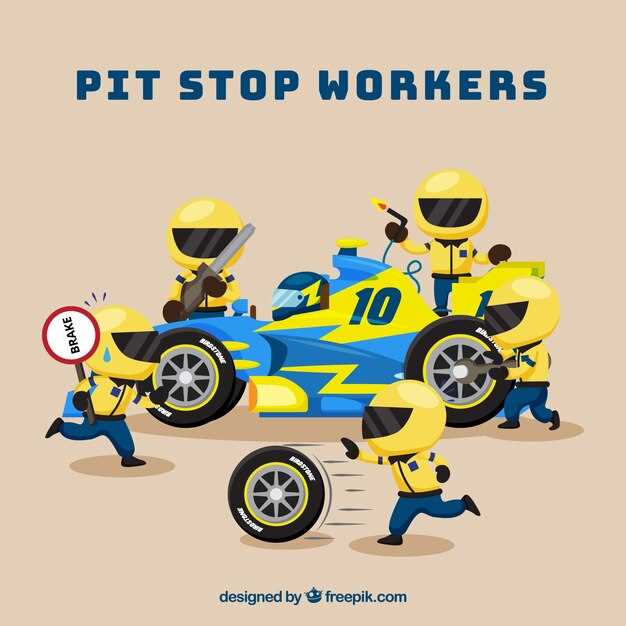
In the dynamic world of competitive motorsports, the rules and regulations governing the sport are not only essential for fair play but also crucial for the safety of all participants. Each motorsport discipline, whether it be Formula 1, NASCAR, or rally racing, has its own set of specific guidelines that dictate how teams and drivers should operate. Understanding these regulations is vital for anyone looking to get involved in the sport, as they provide a framework within which the competition unfolds.
The complexity of these rules can often lead to confusion, especially when it comes to interpreting penalties for infractions. Violations can range from minor technical discrepancies to major offenses that compromise the integrity of the race. Knowing the potential penalties for breaking the rules is imperative for drivers, teams, and fans alike, as it shapes strategies on and off the track. Proper adherence to these regulations not only helps maintain a level playing field but also enhances the overall excitement and competitiveness of motorsport events.
As fans or stakeholders in the motorsport community, understanding the framework of rules and penalties is essential not just for following races but for appreciating the intricacies of the sport. This knowledge empowers fans to engage more deeply with the competition and fosters a greater respect for the skills and tactics employed by teams and drivers navigating the rigorous landscape of competitive racing.
Key Race Regulations Every Driver Must Know

Understanding race regulations is crucial for any driver participating in competitive motorsports. Familiarity with the specific rules can prevent costly mistakes and penalties that may arise during events. Here are some key regulations that every driver should be aware of:
Firstly, compliance with safety standards is non-negotiable. Each driver must wear approved safety gear, including helmets, gloves, and suits that meet the governing body’s requirements. Failure to adhere to these safety protocols can lead to severe penalties, including disqualification from the race.
Secondly, drivers must understand the flag signals used during races. The various colored flags convey important information about track conditions, vehicle performance, and potential hazards. Ignoring flag signals can result in fines or time penalties and jeopardize the driver’s safety and that of others on the track.
Another critical aspect is the adherence to vehicle specifications. Each racing series has specific requirements regarding vehicle construction, modifications, and performance. Running a vehicle that does not meet these standards can result in disqualification or other penalties, including point deductions.
Additionally, drivers must familiarize themselves with the rules surrounding race starts and restarts. Any infractions during these critical moments can lead to significant penalties, including being forced to start from the back of the grid or receiving time penalties. Understanding the correct procedures ensures fair competition and safety for all participants.
Furthermore, the regulations specifying on-track conduct are essential. Unsportsmanlike behavior, such as aggressive driving or causing collisions, can lead to penalties ranging from fines to race bans. Establishing respect for fellow competitors is necessary to maintain the integrity of motorsports.
Finally, staying updated with changes in rules and regulations is vital. Motorsport governing bodies often revise rules to enhance safety and competition. Ignorance of these changes can result in unexpected penalties. Being proactive in staying informed can help drivers navigate the complexities of competitive racing effectively.
Common Penalties and How to Avoid Them
In competitive motorsports, understanding the nuances of rules is essential to ensure both compliance and optimal performance. Penalties can significantly impact a team’s standings and reputation. Here are some common penalties and strategies to avoid them.
One frequent infraction is exceeding track limits. Many racing organizations enforce strict boundaries, and drivers who go beyond these limits may receive time penalties or disqualifications. To avoid this, drivers should familiarize themselves with track layouts and stay well within designated markers during practice sessions.
Another common penalty arises from unsafe driving behavior, including contact with other vehicles, reckless overtaking, or failure to yield. Such actions often lead to penalties such as drivethroughs or grid drops. To mitigate these risks, it’s crucial for drivers to maintain situational awareness and employ defensive driving techniques, ensuring they do not compromise their or others’ safety.
Technical infringements are also prevalent, especially concerning vehicle specifications. Teams may face penalties for non-compliance with regulations regarding weight, dimensions, or engine specifications. Regularly verifying vehicle compliance before races and utilizing pre-race inspections can help teams avoid these pitfalls.
Moreover, improper conduct in the pit lane, such as crew members crossing the line during refueling or tire changes, can lead to penalties. Establishing clear communication protocols and understanding the specific rules governing pit lane operations can prevent such violations.
Lastly, failing to comply with post-race protocol, such as refusing to submit to drug tests or vehicle inspections, can result in severe penalties, including suspension. Teams should ensure that all members are aware of their responsibilities and adhere strictly to all post-race regulations.
In summary, awareness of common penalties associated with motorsports rules, along with proactive measures to comply with them, can significantly enhance a team’s competitiveness while minimizing risks of infractions.
The Role of Technical Inspections in Maintaining Fair Play

Technical inspections are a fundamental aspect of competitive motorsports, designed to ensure that all participants adhere to established rules and regulations. These inspections serve as a checkpoint where vehicles are thoroughly examined for compliance with specifications that govern performance, safety, and modifications. By enforcing a strict adherence to these guidelines, technical inspections play a crucial role in maintaining a level playing field among competitors.
During the inspection process, regulatory bodies assess various components of the racing vehicle, including weight, dimensions, safety equipment, and engine specifications. This rigorous examination not only upholds the integrity of the sport but also deters teams from attempting to gain an unfair advantage through illegal modifications. Any violations discovered during inspections can result in significant penalties, ranging from fines to disqualification, highlighting the importance of compliance for all participants.
Furthermore, technical inspections contribute to the overall safety of motorsports. By verifying that vehicles meet safety requirements, regulatory bodies help minimize the risk of accidents and injuries on the track. This focus on safety ensures that all teams operate within a framework designed to protect both drivers and spectators, reinforcing the principles of fair play and ethical competition.
In conclusion, the role of technical inspections in competitive motorsports is vital for the enforcement of rules, the prevention of penalties, and the promotion of fair competition. These inspections not only safeguard the integrity of the sport but also ensure that every participant has an equal opportunity to compete, fostering an environment where skill and strategy triumph over dishonesty.











